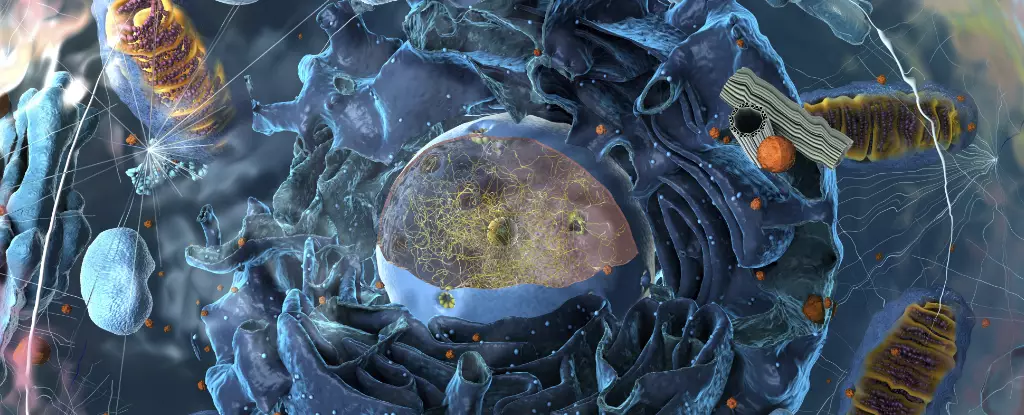Remember those early and somewhat simplistic diagrams of cells you encountered in high school biology? They typically depicted organelles as distinct compartments—like tiny organs each encased in a membrane, performing dedicated functions. Mitochondria for energy production, lysosomes for waste recycling, and the nucleus for DNA storage were among the prominent features showcased. Traditionally, these membrane-bound organelles served as the gold standard for cellular organization, saturating educational materials and guiding scientific inquiry for decades. However, since around the mid-2000s, a revolutionary paradigm shift has emerged, one that challenges the membrane-centric view of cellular biology. Researchers have unveiled the existence of membraneless organelles, now termed biomolecular condensates, reshaping our understanding of cellular architecture and function.
Biomolecular condensates illustrate a new concept in cellular organization. These structures resemble the playful, swirling blobs found in a lava lamp, created not from wax but from a dynamic interplay of proteins and RNA molecules. Think of these droplets as a fascinating blend of semi-cohesive materials that come together, break apart, and merge again, akin to the fluid motions of the lava lamp. As clusters of proteins and nucleic acids preferentially interact with one another, they form localized environments inside cells—offering a unique microcosm for biochemical reactions, unencumbered by the restraints of membranes.
Remarkably, researchers have identified around 30 different types of these condensates, a notable increase compared to a scant dozen traditional membrane-bound organelles. Despite their prevalence, the specific roles of many biomolecular condensates remain elusive. Some undoubtedly play crucial roles in cellular processes such as stress responses, protein synthesis, or the formation of reproductive cells. Yet, for many more, their functions are still shrouded in mystery, prompting scientists to rethink fundamental concepts in molecular biology.
Disruption of Long-Standing Theories
Over the years, a solid principle in biochemistry has been the adage that “structure dictates function.” This conventional wisdom was entrenched after the structural elucidation of proteins like myoglobin in the 1950s, which emphasized that a protein’s specific three-dimensional shape is pivotal to its functionality. However, the discovery of intrinsically disordered proteins (IDPs) has profoundly challenged this precept. Identified in the early 1980s, these proteins defy conventional expectations due to their lack of a rigid structure. Strikingly, it seems that many such IDPs are integral components of biomolecular condensates. While this finding solves one enigma about the roles of unstructured proteins, it simultaneously raises deeper questions regarding the nature and behavior of these condensates.
Further complicating our understanding of cellular biology is the unexpected detection of biomolecular condensates in prokaryotic organisms, commonly assumed to lack organelles entirely. Traditional views pigeonholed bacteria as mere conglomerates of proteins and nucleic acids. However, investigations have revealed that several bacterial species contain biomolecular condensates vital for diverse physiological functions, such as RNA synthesis and degradation. This new insight emphasizes that prokaryotic cells exhibit complexity previously unappreciated and engenders a shift in how we study microbial life.
The revelations surrounding biomolecular condensates extend into the field of molecular evolution and the origins of life on Earth. Current hypotheses postulating that early life began with self-replicating RNA strands could be significantly bolstered by the properties of biomolecular condensates. Given the conditions thought to exist on primordial Earth, the spontaneous formation of nucleotides from simple chemicals is plausible. If RNA molecules can aggregate into condensates without the need for membranes, it suggests a feasible pathway for the evolution of living organisms from nonliving matter, sidestepping the necessity to produce lipids for membrane formation altogether.
The burgeoning field of biomolecular condensate research is opening new vistas for understanding both life and the molecular bases of diseases. Investigations into how these organelles contribute to conditions such as Alzheimer’s, Huntington’s disease, and amyotrophic lateral sclerosis (ALS) offer exciting opportunities for therapeutic strategies. Researchers are forging ahead with innovative approaches to manipulate condensates for potential medical advancements.
As we continue to demystify these complex cellular structures, the prospect of delineating the individual functions of various biomolecular condensates looms large. Such discoveries could redefine the biological curriculum for future generations, leading high school students into an even richer, more nuanced exploration of cellular life and its myriad machinations. Ultimately, the journey into this uncharted territory heralds not only profound scientific insights but also a broader revolution in our understanding of life’s intricate tapestry.


Leave a Reply